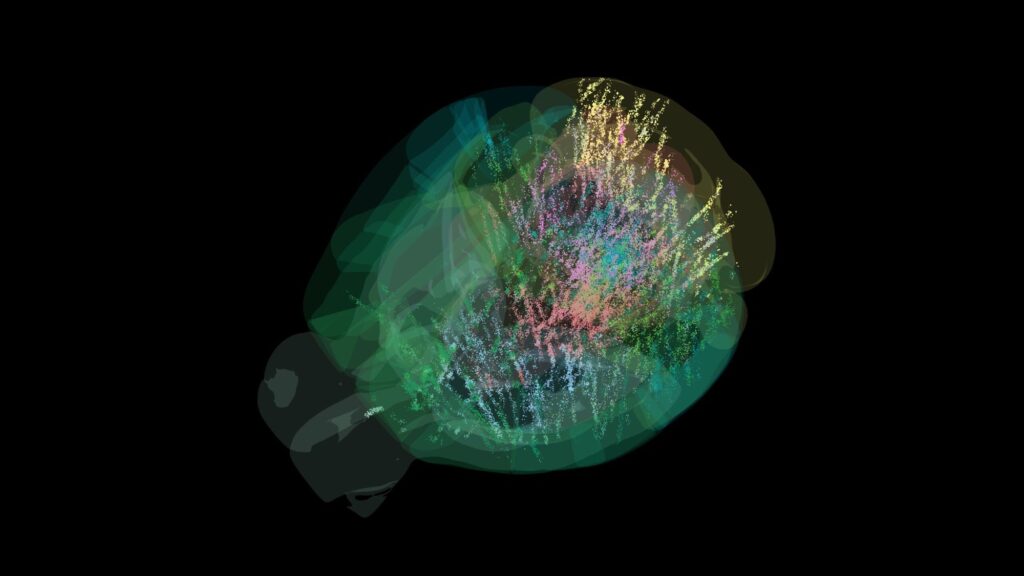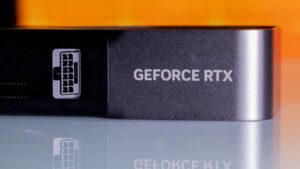
For the first time, scientists have mapped how nearly an entire mammalian brain lights up as decisions are made. This monumental effort, which tracked single neurons across almost the whole mouse brain, offers a striking view of how thoughts, choices, and rewards ripple through the mind.
The scale of this achievement is extraordinary. Researchers recorded signals from more than 621,000 neurons using 699 high-density Neuropixels probes. The study drew on data from 139 mice, collected across 12 laboratories, all performing the same decision-making task. Together, the recordings covered 279 brain regions, from the forebrain to the cerebellum. The International Brain Laboratory (IBL)—a partnership of 22 labs in Europe and the U.S.—coordinated this massive dataset, a feat no single lab could have achieved alone.
Why Mapping the Brain Is So Difficult
Scientists have long known that different brain areas specialize in processing vision, movement, memory, or reward. However, most earlier studies only examined a few regions at once, offering a narrow view that made it difficult to understand how the brain works as a whole system.
To overcome this limitation, the IBL standardized tools, experiments, and analysis methods across all participating labs. This allowed scientists to combine their results seamlessly. By recording from the same regions during the same behavior, the team created a dataset that could be directly compared and deeply analyzed.
Alejandro Pan Vazquez, a Princeton University researcher and contributor to the project, described the achievement as unprecedented.
“This had never been done before,” he explained. “There was a lot of innovation on the organizational side to integrate the data from different labs. This turned out to be the first time such a large collaboration like this had ever been done in neuroscience.”
A Task with Steering Wheels and Flashing Circles
The experiment was simple to watch but complex for the mice. Each mouse sat in front of a screen where a black-and-white striped circle briefly appeared on the left or right. To earn a sip of sugar water, the mouse had to spin a tiny steering wheel to move the circle to the center.
Some circles were faint, forcing the animals to guess based on recent patterns. This helped researchers measure how prior experience and expectations influence decisions. While the mice worked, the probes recorded hundreds of neurons across multiple brain regions at once.
By pooling results from across the globe, the IBL assembled an enormous dataset: 620,000 neurons from nearly the entire brain. Princeton neuroscientists Ilana Witten, Tatiana Engel, and Jonathan Pillow helped design the parameters, create strict quality controls, and build shared pipelines for analyzing the flood of data.
A Brain Lighting Up Like a Christmas Tree
When scientists reviewed the recordings, the brain’s activity resembled a light show. Initially, neurons were quiet. Then visual regions activated as the striped circle appeared. Soon after, signals tied to the mouse’s choices ramped up in the midbrain and hindbrain.
What surprised scientists most was that movement-related signals appeared almost everywhere in the brain, even before the mouse acted. When the wheel turned, motor areas lit up—but so did many others. And when the animal received its sweet reward, activity surged across the brain in unison.
The result, according to several researchers, resembled a Christmas tree lighting up. Decisions and rewards weren’t handled by isolated clusters but spread across regions, rising and falling together.
Two Breakthrough Findings
The first major conclusion was that decision signals are distributed broadly, not confined to special “decision centers.” This upends the old textbook model where sensory areas detect input, decision areas weigh options, and motor regions carry out actions. Instead, the new evidence points to a fully interconnected system where many regions contribute at once.
The second finding emerged from the trials with faint circles. When the mice had to rely on memory of where lights had recently appeared, their expectations were also encoded across the brain. Even the thalamus—long considered a purely sensory hub—carried information about what the mouse predicted. This suggests the brain acts like a widespread prediction machine, sending expectations through many networks to guide action.
Witten, who has spent years studying neural circuits, said the results push the field forward.
“One of the important conclusions of this work is that decision-making is indeed very broadly distributed throughout the brain, including in regions that we formerly thought were not involved.”
A Model for Collaborative Science
Pulling this off required unprecedented teamwork. The IBL, founded in 2017, was designed for large-scale, coordinated neuroscience. Instead of publishing competing results, 22 labs agreed to follow strict protocols, share data openly, and analyze results collectively.
Tatiana Engel, a Princeton neuroscientist who helped coordinate the effort, described it as only the beginning.
“The brain-wide map is undoubtedly an impressive achievement, but it marks a beginning, not the grand finale,” she said. “The IBL has shown how a global team of scientists can unite, pushing each other beyond comfort zones into uncharted territories no single lab could reach alone.”
The findings were published in two papers in Nature, along with access to the full dataset. The hope is that other researchers will mine it to uncover fresh insights about decision-making and brain function.
Practical Implications of the Research
This work offers more than a new map of neurons—it redefines how decision-making is studied. The discovery that choices and expectations are spread across the brain challenges decades of assumptions and could reshape theories of cognition.
By releasing the dataset publicly, the IBL gives other scientists the chance to test new ideas, design experiments, and compare models against this rich benchmark. The approach also shows that collaborative science at a global scale can achieve what isolated labs cannot.
In the long run, insights from these distributed neural patterns may influence the development of treatments for brain disorders that affect decision-making, such as Parkinson’s disease, Alzheimer’s, or addiction. By understanding how expectations and actions flow across networks, researchers may find new targets for therapies.







